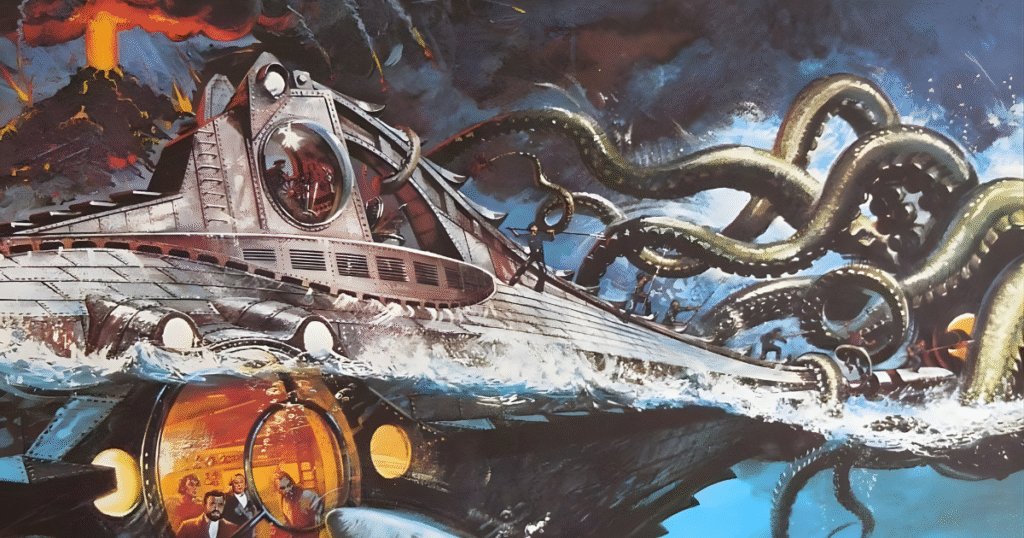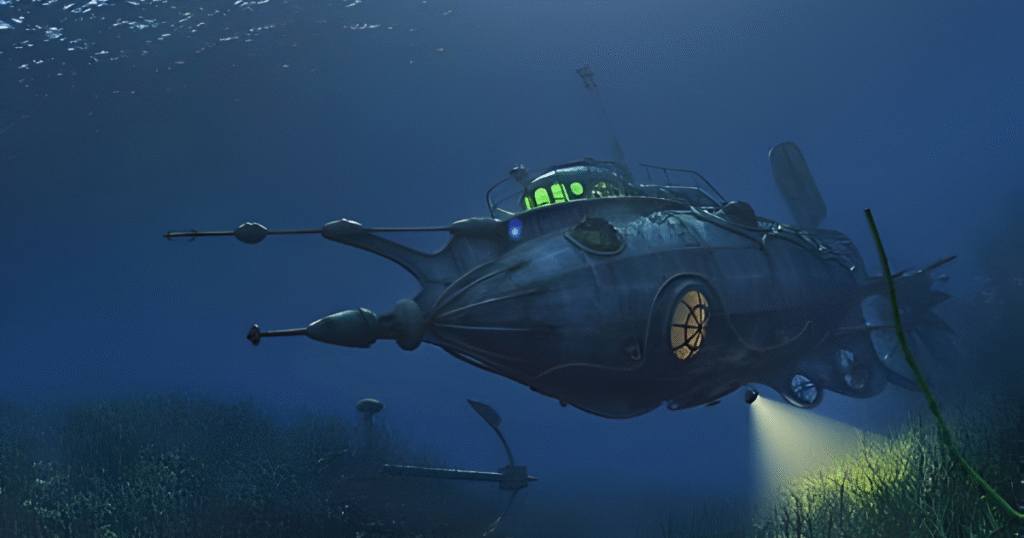
When Jules Verne first published Twenty Thousand Leagues Under the Sea in 1870, the world had barely begun to understand the ocean’s vastness. The novel’s title — 20,000 leagues under the sea — continues to fascinate scientists, explorers, and readers alike. But what exactly does it mean, and how does it connect to today’s technological frontiers in ocean exploration?
Understanding “20,000 Leagues” — Distance, Not Depth
The title often causes confusion. “20,000 leagues under the sea” doesn’t refer to a literal depth but rather the distance traveled beneath the waves. One league equals approximately 4 kilometers, meaning 20,000 leagues translates to around 80,000 kilometers (nearly 40,000 nautical miles) — almost twice the circumference of the Earth. Verne’s story follows the journey of Captain Nemo and his crew aboard the Nautilus as they traverse this massive distance across the world’s oceans.
While fictional, this measurement symbolizes the boundless potential of exploration — a concept that still drives modern science and innovation.
The Nautilus: A Visionary Submarine Ahead of Its Time
At the heart of Verne’s tale is the Nautilus, an advanced submarine that represented a technological marvel long before real-world submersibles existed. In Verne’s imagination, the Nautilus was electrically powered, self-sufficient, and capable of traveling at great depths — ideas that would only become possible a century later. Its construction would have required employing qualified machinists, adroit electromechanics and an expert mechanical assembler, the kind of skilled professionals essential to building precision-engineered vessels even today.
The Equipment Aboard the Nautilus
- Navigation Instruments: The submarine featured a compass, chronometers, and a sextant for precise underwater navigation.
- Scientific Tools: Thermometers, barometers, and microscopes were used to study marine life — reflecting Verne’s admiration for science and discovery.
- Power Source: The Nautilus was described as being powered by electricity from sodium-mercury batteries, a concept visionary for the 19th century.
- External Gear: Crew members used advanced diving suits equipped with the Ruhmkorff apparatus — an early electric lantern powered by a Bunsen battery, allowing exploration in the pitch-black deep sea.
- Defense Technology: The crew carried electric guns and torpedoes, a hint of future naval innovation.
These elements showed Verne’s remarkable foresight into technologies that would later inspire real submarines, deep-sea diving equipment, and even electric-powered vehicles — industries that still depend on unique craftspeople like machinists and mechanical assemblers to turn theoretical designs into functional innovations.
From Fiction to Reality: Technology Inspired by Verne

Modern deep-sea exploration has turned Verne’s fantasy into reality. Today’s submersibles and remotely operated vehicles (ROVs), such as those used by NASA, the National Oceanic and Atmospheric Administration (NOAA), and private firms like OceanGate, echo Verne’s vision.
Real-World Technologies Paralleling the Nautilus
- Maritime Engineering: Industries specializing in naval architecture and advanced materials now create pressure-resistant hulls capable of withstanding depths over 10,000 meters.
- Energy Innovation: Verne’s concept of electric propulsion finds a modern parallel in renewable energy systems and ocean thermal energy conversion (OTEC) — the process of generating electricity from the temperature difference between surface and deep ocean water.
- Scientific Exploration Tools: Sophisticated sonar mapping, pressure sensors, and robotic arms now allow scientists to study the ocean floor, collect samples, and even film in total darkness.
- Materials Science: Modern submersibles use titanium and carbon fiber instead of the iron plates Verne imagined, reducing weight while improving durability and depth capacity.
Each of these advancements requires precise engineering — something only achievable with teams that include electromechanics, mechanical assemblers and experienced manual machinists capable of producing high-performance mechanical systems.
Industries Behind Deep-Sea Innovation
Exploring Earth’s deepest frontiers requires collaboration across multiple industries:
- Maritime Engineering and Manufacturing: Build vessels capable of deep-sea endurance.
- Energy and Power Systems: Provide sustainable ways to fuel long underwater missions.
- Materials Science: Innovate stronger, lighter materials to resist crushing ocean pressures.
- Marine Biology and Oceanography: Analyze the unique ecosystems and species found in extreme ocean environments.
- Telecommunications and Robotics: Enable real-time data transmission and remote operations from thousands of meters below.
It’s this intersection of fields — supported by skilled trades like mechanical assemblers, manual machinists, electromechanics — that transforms Verne’s 19th-century fiction into 21st-century reality.
How Far Could We Really Go?
Even today, the deepest known point in Earth’s oceans, the Mariana Trench, is about 10,984 meters (36,037 feet) below sea level. While we’ve sent crewed missions there — like James Cameron’s 2012 solo descent and Victor Vescovo’s 2019 expedition in the DSV Limiting Factor — most of the ocean remains unexplored. Scientists estimate that over 80% of the ocean floor has never been mapped or seen by humans.
Reaching deeper requires not only advanced technology but also immense courage — and a dedicated workforce where recruiting hard to find electromechanics and other technical experts continues to drive progress.
The Need to Keep Pushing the Boundaries of Science
Verne’s novel wasn’t only about adventure; it was about the human drive to explore the unknown. The ocean is one of Earth’s last great mysteries, home to countless undiscovered species and resources. Understanding it could unlock answers to climate change, medicine, and even future space travel.
Modern technologies — from autonomous underwater vehicles (AUVs) to AI-driven mapping systems — show how far we’ve come. Yet, every innovation still carries Verne’s message: progress is born from imagination, persistence, and craftsmanship.
Conclusion
The phrase “20,000 Leagues Under the Sea” captures more than distance; it captures human ambition. From Captain Nemo’s fictional submarine to the modern-day exploration of Earth’s deepest trenches, our journey beneath the sea reflects a timeless truth — that progress depends on curiosity, innovation, and skilled craftsmanship.
As technology evolves, what was once fiction is now science. And perhaps one day, when we venture beyond our oceans and into the uncharted waters of other worlds, we’ll realize that Verne’s message was never just about the sea — it was about how far humanity is willing to go to discover what lies beneath and beyond.

